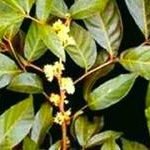Each week we like to take a moment to give special attention to a natural ingredient used to promote health. This week we’re going to take a look at a Chinese fungi known to do everything from increasing endurance in athletes to helping rebuild the body after long-term illness.
Chinese fungi are known to do everything from increasing endurance in athletes to helping rebuild the body after long-term illness. Many of the compounds found in medicinal mushrooms like reishi, maitake, and cordyceps are classified as host defense potentiators. It is believed that combinations of these fungi compounds target and strengthen the human immune system, as well as aid in neurotransmission, metabolism, hormonal balance, and the transport of nutrients and oxygen. They help the body regulate the development of lymphoid stem cells and other important defense responses.
Maybe one of the most underrated of these medicinal mushrooms is cordyceps. They are considered one of the most valued medicinal fungi in all of Chinese medicine, among the most potent, and also one of the most expensive, at one time costing as much as $249 per kilogram.
Cordyceps for Improving Oxygen Utilization
One key benefit of cordyceps is its ability to improve oxygen utilization. In fact, one 2004 study found that cordyceps improved athletes’ oxygen utilization by as much as 50 percent. It doesn’t just benefit athletes either. Another study found elderly patients experienced a nine percent increase in aerobic capacity when taking cordyceps.
Cordyceps for Heart Health
It may also help improve your heart health as well. A study published in the 1999 issue of the Journal of Alternative Complementary Medicine reported that cordyceps can lower total cholesterol by 10-20 percent and increase HDL by a quarter. Other studies have found that cordyceps can lower your heart rate. This may explain why people report being able to train for longer periods of time when using this supplement.
Cordyceps for Higher Energy Levels
Another study from the Hong Kong University of Science and Technology, shows that cordyceps can help boost your body’s ability to produce adenosine triphosphate (ATP), the energy currency of your muscles. It is the fuel your body uses for quick bursts of activity like jumping or sprinting. In addition, cordyceps may also provide a boost similar to that of caffeine. The fungi can produce an apparent increase in energy, as it actually attaches to the same receptors as caffeine – all without the negative side effects. In fact, one study found that elderly patients suffering from fatigue who took cordyceps reported a 92% improvement in their symptoms in 30 days.
Cordyceps for the Immune System
Cordyceps is also widely employed to treat upper respiratory problems, impotence, and weakened immune systems, and also by athletes to increase endurance. Recent research with extracts of cordyceps has yielded a protein-bound polysaccharide with activity against tumors, as well as being capable of upregulating macrophage activity, and inducing the apoptosis (cell death) of human leukemia cells. In addition to being a host defense potentiator, cordyceps have properties similar to those of ginseng and have been used to strengthen and rebuild the body after exhaustion or long-term illness. All of these are reasons Jon Barron includes cordyceps in his Immunify, immune boosting formula.
More Natural Health Benefits of Cordyceps
- Improved brain functioning
- Anti-aging fighter
- May help fight insulin resistance
- May help decrease the growth and spread of streptococcus bacteria
- May help increase immune defense against breast cancer
- May inhibit the spread of colon cancer
- Boosts testosterone levels
- Increases natural killer cell activity
- Protects against free radical damage
- Helps with discomfort from tired legs
- Helps with endurance & stamina
- Increases cellular energy
- Improves respiratory function
- Helps with chronic kidney diseases
- It has also been used traditionally for impotence, neurasthenia, and backache.
History of Cordyceps
Aside from its health benefits, cordyceps has a very interesting history. In China, it is known colloquially as chongcao, which means, “worm-grass.” It was formerly used as a popular medicinal food, often cooked with chicken or duck. However, due to its high expense, most people cannot afford it except in medicinal quantities. Because of this high expense, among the wealthy and powerful in China, cordyceps was considered quite the prestigious gift and was seen as a status symbol.
Due to the rarity and high prices of the wild collected variety, attempts have long been made to cultivate cordyceps. After much early frustration in attempted cultivation, commercially viable methods were finally achieved in the late 1970’s. By the mid 1980’s, the majority of cordyceps available in the world’s marketplace was artificially cultivated. Because of the development of these modern biotechnology-based cultivation methods, the availability of this previously rare health supplement has greatly increased in the last twenty years, while at the same time the cost has come down.
How to Take Cordyceps
You can find this medicinal mushroom in many forms. It is most commonly found dried in health food stores and is often added to food like soups and stews. You can also find it in powered form (great for teas) or in liquid, table or capsule form.
For more information on these medicinal mushrooms and how immune boosting ingredients can be used in a formula, click here.








